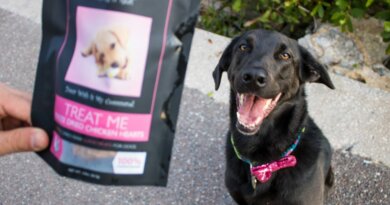How My Life Has Changed Since I Was Diagnosed With Heart Failure
By Jang Jaswal, as told to Danny Bonvissuto
I grew up in India and migrated to the United States in the mid-’80s.
It was stressful to settle down into the American lifestyle, because I couldn’t find a job in my field. Before I moved to America, I was the head of the science department at Narayan Indian College in the Fiji Islands. In those days, we didn’t have the internet: You read the newspaper, applied for jobs, and waited for someone to answer. So I drove a truck until I found a position in quality control for pharmaceuticals.
I smoked two packs a day, didn’t exercise, drank soda, and loved Kentucky Fried Chicken. Even though I have a genetic history of heart issues — my dad died at 66 from a heart attack, and my mother died at 72 from heart issues — I felt young and strong.
I had my first heart attack 3 years after I moved to America. I was 32 years old.
History of Heart Attacks
In those days, medical technology wasn’t as advanced as it is now. After my first heart attack, an angiogram found two blockages. They did the balloon method to increase blood flow to my heart, but stents weren’t approved until a few years later.
I came out of the hospital and took care of myself for a few months but then went back to smoking, drinking soda, and eating fried foods.
I had blocked arteries every few years after that. Between my first and second heart attacks, stents were approved. I had two implanted in 1992, then two more after another heart attack in 1997. After a major heart attack in 2000, I had triple bypass surgery and stopped smoking.
I had another heart attack in 2005 and got two more stents. I had heart attacks in 2007, 2008, and 2010, and got two or three stents each time.
Two Strokes in 3 Months
In 2000, I had two strokes within 3 months. After that, I retired from my job. I lost my peripheral vision on my left side: I can’t see anything coming from my left side until it’s right in front of me.
Continued
I also lost my sense of balance and spatial orientation. It’s a weird thing: A part of our brain controls how you know where you are. From my house, I knew this way is north, that was is south, and so on. After the stroke, I didn’t know that anymore.
Every week, I went to the same store with my family, and I knew where the cash registers were. After my stroke, I thought the cash registers were on the other side. It stayed like that for a couple years.
Kidney Failure and the Beginning of the End
In 2010, my kidneys gave up. I was on a home dialysis system for 2½ years and then went to a center 4 days a week for 4 hours at a time.
In 2013, my heart started giving up. I got so weak, it was hard for me to get up from a chair and take a few steps. I’d have to contemplate which wall I was going to use to hold me up. My mind started to get foggy as well. I couldn’t focus on anything, even television.
Then I lost my appetite. I asked my doctor about it, and he said, “Jang, your body is preparing to die.” I asked him how much longer I had to live, and he said, “Another 6 or 8 weeks if you’re lucky.”
The Call That Changed Everything
All the well-known hospitals refused to consider me for a transplant. They said, “No, we’re not going to touch your case.”
Then the director of heart transplants from the University of California at San Francisco called me personally at home. I don’t know how he got my number.
He said, “Jang, I want to see you. I want to meet you. Bring your family. We’re going to talk about your heart.”
I took my wife, daughter, and son to the meeting.
The doctor said, “You know your situation.”
I said, “Yeah, I’m against the wall now, and I’m waiting for it to end.”
Continued
He said, “I can implant a machine called an LVAD [left ventricular assist device] to pump the blood your heart can’t pump anymore. I haven’t implanted it in a dialysis patient before, but if you let me do it, there’s a pretty good chance I can help you.”
I believe in signs, so I said, “Let’s go ahead. It doesn’t matter if I live or die. It’ll be a good experiment, however it goes.”
After the 14-hour surgery, I was alive on two machines: the LVAD and my dialysis machine. But I started feeling better. Started eating again. At my checkup, the doctor said, “You’re ready to go under the knife again,” and he put me on the transplant list.
Seven weeks later, on November 22, 2013, I had a heart and kidney transplant. And I haven’t looked back since. When I tell people about my health history now, they think I’m lying.
What I Do Now
My life has totally changed now and mostly revolves around taking care of myself.
Before COVID-19, I’d get up in the morning, walk 4 or 5 miles, come back, shower, relax, do chores, meditate, and read.
I love having philosophical discussions with friends. I’m a science student at heart, and it makes me happy to think and talk about it.
I always loved traveling. Growing up in India, I’d see American travelers in their VW vans, and I wanted to see the world, too. Before COVID-19, I used to spend 6 months of the year just traveling to places like Fiji, Dubai, Canada, Moscow, and Shanghai.
I volunteer and give back as much as I can. I’m part of Donor West, which promotes organ donation. I talk to hospitals, emergency room nurses, and schools. I give a talk here and there for the National Kidney Foundation and participate in their walks. I spend a lot of time with the American Heart Association (AHA) as a national heart failure ambassador. I’m also on a peer review committee for fellowships the AHA gives out to researchers. Sometimes, a social worker calls and asks me to talk to a patient or family who’s getting the LVAD implant.
Continued
What I Eat Now
Instead of breakfast, I generally have brunch around 10 a.m. I cook all my own food. I try to avoid Indian curries, which I used to love, because they’re rich in fat and don’t taste good until you put a lot of salt in them.
I’m diabetic and hypertensive, so my diet is low-sodium and low-carbohydrate. I eat a lot of greens. My dinners are even lighter than brunch: 3 ounces of meat, beans, and greens.
How I Manage My Health
Another part of my life that’s totally changed is staying on top of medications. I take about 32 pills a day. They have to be taken at a certain time: I take some pills once a month; others I take once a day at a specific time.
I don’t want to miss a single dose of my immunosuppressant because my own immune system will attack my transplanted organs, which shows as rejection.
I get lab work once a month, and of course, I have to stay on top of my medical appointments. Once a year, I have an angiogram, biopsy, and heart catheterization to check my heart.
I’ve been doing this so long now that it doesn’t feel like effort; it’s become a reflex.
Heart Failure and My Family
My wife and I had a 1-year-old daughter and she was pregnant with my son when I had my first heart attack. They grew up with all of this. There’s something about me and Thanksgiving: I’d always be in the hospital. All the food places were closed, and they’d have to get something out of vending machines. Sometimes I feel guilty about that.
My wife took care of the kids all along. There was a lot of burden on her because of my health. Before my transplant, I hadn’t seen her smile for a good 30 years. After my transplant, I opened my eyes and saw the biggest smile on her face. Now, she relaxes.
Continued
Everyday Victories
Even now, it seems surreal that I’m really alive. The good part is that I’ve started enjoying life a lot more.
Before my transplant, I was just living like any other person is. We don’t appreciate life at all. We’re so engrossed in our daily lives: making money, going here, going there. We never take a moment to appreciate what we have. Taking a breath. Taking a step. Even now when I walk, I’m so appreciative that I can go 4 miles. I can eat this. I can eat that. Those simple things really give me a lot of joy. I feel very, very blessed.




